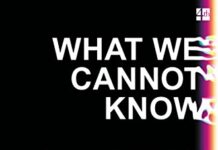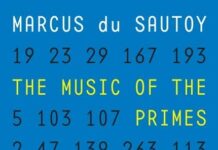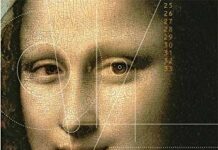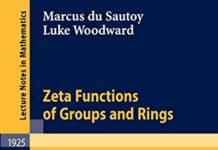
Ebook Info
- Published: 2011
- Number of pages: 278 pages
- Format: PDF
- File Size: 3.34 MB
- Authors: Marcus du Sautoy
Description
Every time we download music, take a flight across the Atlantic or talk on our cell phones, we are relying on great mathematical inventions. In The Number Mysteries, one of our generation’s foremost mathematicians Marcus du Sautoy offers a playful and accessible examination of numbers and how, despite efforts of the greatest minds, the most fundamental puzzles of nature remain unsolved. Du Sautoy tells about the quest to predict the future—from the flight of asteroids to an impending storm, from bending a ball like Beckham to forecasting population growth. He brings to life the beauty behind five mathematical puzzles that have contributed to our understanding of the world around us and have helped develop the technology to cope with it. With loads of games to play and puzzles to solve, this is a math book for everyone.
User’s Reviews
Reviews from Amazon users which were colected at the time this book was published on the website:
⭐Marcus du Sautoy is a professor of mathematics at the University of Oxford. He also has appeared on television programs presenting mathematical subjects for general lay audiences. In THE NUMBER MYSTERIES du Sautoy tries to do much the same thing – to show a general lay audience how mathematics underlies or explains much of everyday life: from the number of petals on a flower, to dragon noodles, to the construction of soccer balls, to three-dimensional teabags, to the Beijing Olympic Swimming Center, to roulette wheels, to Sudoku, to the Mayan calendar, to the ISBN code number for this book and all others published since about 1970. Along the way, he discusses such mathematical concepts as perfect numbers, Fibonacci numbers, fractals, and prime number codes.Du Sautoy is enthusiastic and obviously knowledgeable. His writing style is relatively informal and, for the most part, comprehensible by the moderately intelligent and interested layperson. But I sense that the audience for THE NUMBER MYSTERIES is somewhat limited. The book surely is too simple or superficial for those who already have a strong background in mathematics. As for those with little or no interest in mathematics, I doubt that the book will kindle one. So it appears that its audience will be primarily those who once were charmed by the rigor and mystery of mathematics but who have lost touch with the discipline – and rather regret that development of life.I count myself in that group, so I like reading a book like this every few years. Among its ilk, I found THE NUMBER MYSTERIES to be in the middle of the pack. One complaint I have is that the book does not include, for those who are intrigued by one or more of the mathematical concepts mentioned in it, references for further, more in-depth study. Another complaint, albeit having nothing whatsoever to do with its content, is that the cover of the paperback edition is downright ugly; it is perhaps the most unsightly book cover in my library.
⭐I’m a fan of Marcus du Sautoy and wanted to buy this book as soon as it was available via kindle on the ipad. Whilst the book content is great, and would be worthy of 5 stars, the implementation on kindle is really quite poor. The main text breaks in some bizarre ways, and some illustrations are completely missing making the book a very difficult read.Perhaps an updated version could be made available to fix these errors?
⭐Good overview of some of the interesting aspects of math. While there are some heady equations in the book, they are sparse and not required for understanding the concepts outlined. I’d recommend this book for the non-mathematician that is looking for some thought-provoking numerical concepts.
⭐Readers at all levels will enjoy this book. The author explains each concepts using both descriptive text and multiple examples to insure each reader is given a chance to grasp the idea in a manner that works best for them.The web based and cut./paste exercises are easy and fun, and allow one to physically engage with an idea.Highly recommended even for those who work with numbers for a living.
⭐Numbers are important, also in every day life.But few realize how they penetrate our existence, and how they may be extracted from the most surprising subjects.
⭐I am enjoying the book, but the translation to an ebook is terrible. It misses out many illustrations, and the layout is poor. It looks like this was published with zero effort on the part of the publisher.
⭐Good product and good service.
⭐I really enjoy popular science and math books in general, and I’m enjoying this one in particular. My criticism though is that Du Sautoy is not a master of language or explanation; he’s only pretty good. I’ll give two examples:1) Foam. Du Sautoy starts talking about foam in his section on the geometry of bubbles, and tells us that foam is a thorny mathematical problem, but he never tells us what foam is exactly. I read through about half of this section before I figured out what problem it was about foam that Du Sautoy was solving. A better writer would have made that clear from the beginning. This is the sentence Du Sautoy needed to write but didn’t:”Foam is a trickier problem than the simple case of two bubbles sticking together because foam is made of thousands of bubbles of different sizes sticking together in one mass. Thus, on the inside of foam, all of the bubbles are plane-sided; no bubbles have a spherical portion. The problem of foam is figuring out what the precise three-dimensional shape of all those tiny bubbles inside foam is, because there must be one most efficient shape for plane-sided bubbles to take when they are packed together like that, i.e., one most efficient way for three dimensional solids to pack together perfectly. We know that nature will automatically form bubbles of whatever that efficient shape is, just like a bubble will take a perfectly spherical shape when it is on its own.”2) Here’s a sentence I still don’t understand, from the same chapter on three-dimensional shapes, about wrapping two ropes around a bagel shaped solid:”If the black rope is wrapped through the inside of the hole of the bagel and the white rope is laid down on a circle going around the outside ring of the bagel, then there is no way to pull the black rope to match up with the white rope without cutting it.”This is the main payoff sentence to a puzzle that takes 2 1/2 pages to describe. I understand everything else about the puzzle, before and after. I just don’t understand this. In particular, what does “pull the black rope” mean, and what does “match up with the white rope” mean? Likely, someone will explain this to me in the comments of this review and I’ll get it, but the point stands: these phrase are far too vague on their own to do the job of explanation they are intended to do.There’s just something slightly off about the way Du Sautoy writes; he isn’t in our heads as readers, and doesn’t realize when he hasn’t built the bridges to understanding. I quite enjoy reading about math. I loved Simon Singh’s book on Fermat’s last theorem, and was able to follow his presentation of the proof all the way through to the best of my ability. Same with Douglas Hofstadter’s presentation of Godel in “I Am A Strange Loop”. So I have to lay the gaps in understanding of the simple problems presented in this book at Du Sautoy’s feet, and not my own.All that said, the book is still a bucket of fun. I enjoyed every page.
⭐Before I acquired the eformat of this book, I carefully read all of the reviews. There were only two reviews with one star and both of them commented on the irritation that the ebook had misrepresented some of the equations. I have only read the first chapter so far.On the one hand the book is brilliant about getting you to think. However, along with the people who only gave the ebook one star I have to concur that it is highly irriatating when trying to follow the maths when it is incorrectly reproduced. If I were a more developed mathmatician I would (hopefully) be able to spot the inaccuracies immeadiatly. Although sitting down with a pen, some paper and a calculator and an internet connection I have been able to correct some of the inaccuracies such as the perfect even primes formular. It is not as the book says 2[to the power of a prime]-1(2[to the power of a prime]-1). It should be 2[to the power of a prime-1](2[to the power of a prime]-1).However, it is not (for me) possible to work out all of the inaccuracies in the book i.e 2[power 17] divided by 17 has a remainder 2. There is a possibility that I am just not capable of understanding that formular and it is actually correct. If you know how to make this formular work, feel free to comment and let me know because I would dearly love to understand the way this formular works.Overall, the book has many inaccuracies that may drive you nuts but despite this the book is interesting.If this is the type of book you enjoy I recommend
⭐How Many Socks Make a Pair?: Surprisingly Interesting Maths
⭐and Alex Bellos adventures in numberland, for teachers a must read is the elephant in the classroom by Jo Boaler.
⭐Marcus du Sautoy’s enthusiasm is infectious. It transports you from the dreary maths lessons that you remember from school into a fascinating world. I couldn’t read more than a few pages without stopping and looking stuff up that developed the ideas in the book – I may never finish it! A word of warning though: it contains a lot of typos that could confuse or mislead the unwary. The publishers should issue a revised edition.
⭐Still ploughing through – the Kindle edition is a bit ‘clunky’ when looking at the diagrams, but the subject matter itself is fascinating. Prof du Sautoy makes some of the esoteric concepts understandable, but I wouldn’t like to be required to sit an exam on the contents of the book! I can only look on in awe at the minds and discoveries of the characters he describes and wonder how their brains worked. Mathematics really appears to be a universal language which reaches across time and space. Probably not aimed at University maths students, but a challenging and genuinely interesting canter through the naturally occurring patterns of life and shapes.
⭐This book has made me think and rethink the way maths is integrated into all aspects of the world around us. I had to re-read several pages to get my head around some of the equations but this did not detract from a brilliantly presented subject. I especially like the mathematicians odd prime number joke.
⭐I still don’t understand quadratic equations though. But what wonderfully clear and interesting explanation explanations from the author, with examples and illustrations throughout. I particularly liked the section on cryptology. This is the kind of thing you can keep going back to and increasing your understanding as you do.
Keywords
Free Download The Number Mysteries: A Mathematical Odyssey through Everyday Life (MacSci) in PDF format
The Number Mysteries: A Mathematical Odyssey through Everyday Life (MacSci) PDF Free Download
Download The Number Mysteries: A Mathematical Odyssey through Everyday Life (MacSci) 2011 PDF Free
The Number Mysteries: A Mathematical Odyssey through Everyday Life (MacSci) 2011 PDF Free Download
Download The Number Mysteries: A Mathematical Odyssey through Everyday Life (MacSci) PDF
Free Download Ebook The Number Mysteries: A Mathematical Odyssey through Everyday Life (MacSci)



